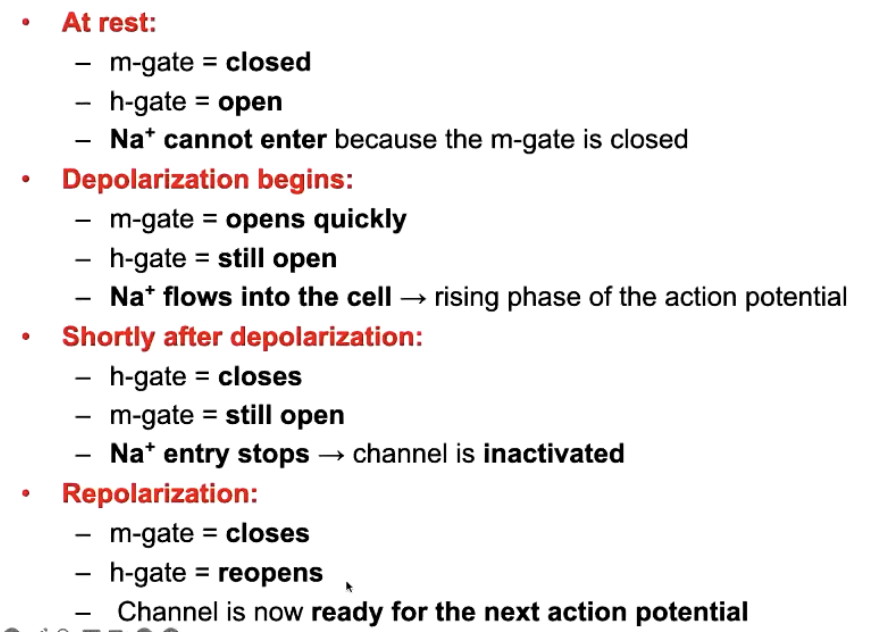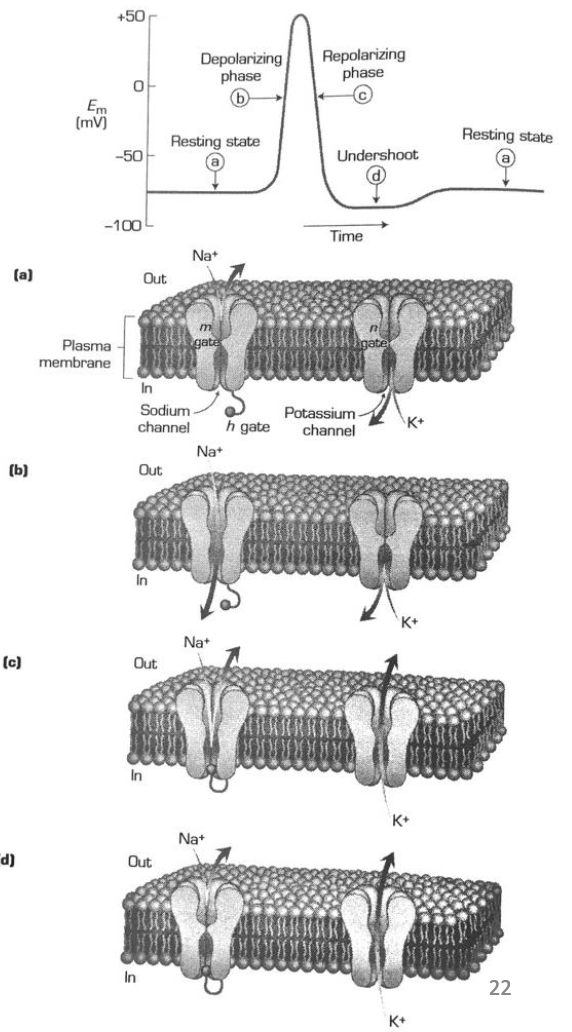10. The Action Potential Part 2: Ionic Permeability and Channel Conductance
1/14
There's no tags or description
Looks like no tags are added yet.
Name | Mastery | Learn | Test | Matching | Spaced |
|---|
No study sessions yet.
15 Terms
What happens when you inject negative current into an axon, and how is it measured?
Two probes are used:
One injects current & measures Vm
The other measures Vm at a distance
Injecting negative current makes inside more negative → hyperpolarization at point A
Removing negative current makes current leak out the cell → returns to resting membrane potential
This shows that neurons respond to changes in ionic current by changing their membrane potential (Vm)
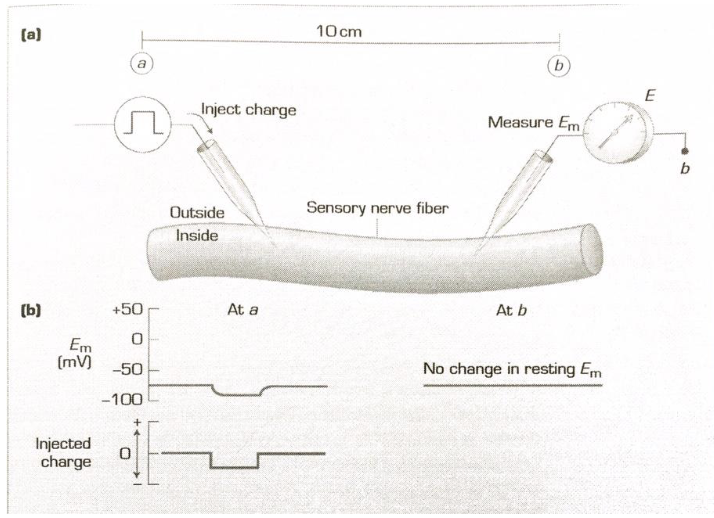
Why is no change in membrane potential detected at point B when injecting small current?
The current is too small to reach threshold → no action potential
The membrane leaks charge, so current decays before reaching point B
Therefore, Vm at point B stays the same
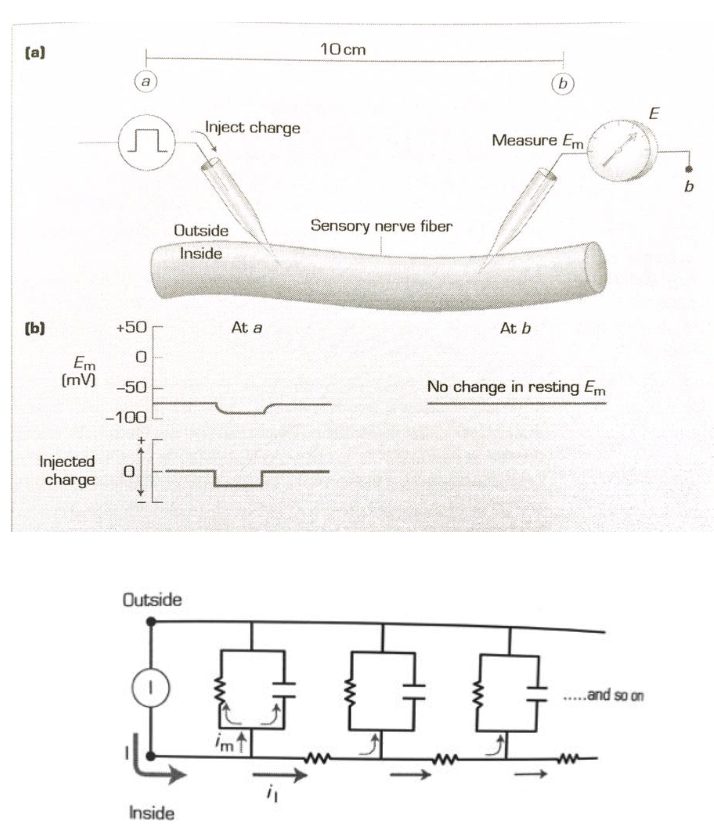
What happens when you inject positive current into the axon?
Small positive current → slight depolarization (Vm becomes less negative)
But decays with distance → no effect at point B
Large positive current → reaches threshold → action potential triggered
AP seen at both points A & B
Delay in time at point B due to propagation time
Action potentials are triggered by depolarization!
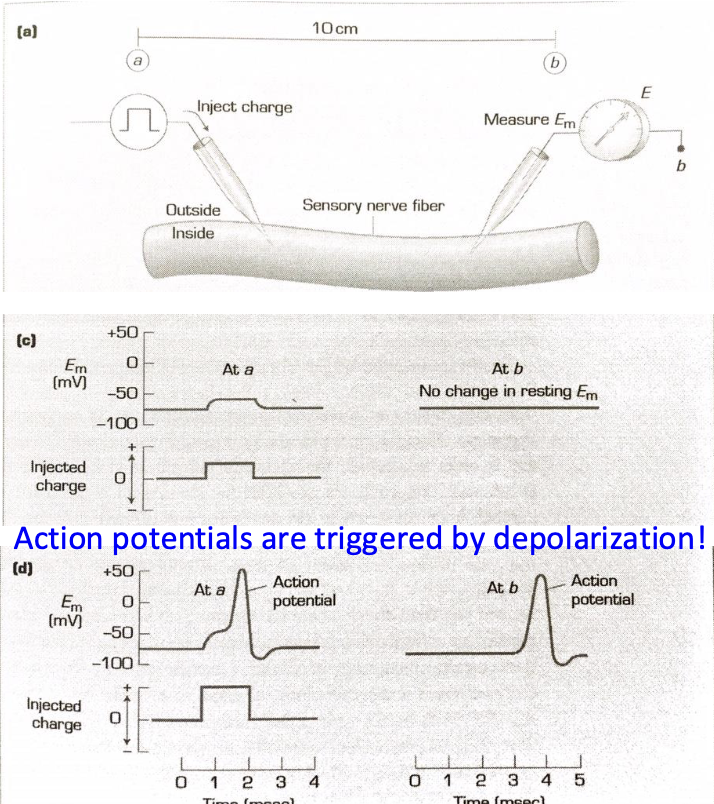
How do changes in ionic conductance cause the action potential?
During rising phase: Na+ conductance (gNa) ↑ rapidly → Na+ enters → depolarization
At AP peak, Vm does not reach ENa (+58) because:
Sodium channels close quickly after opening, they only stay open briefly
Potassium channels open during the peak of the AP, allowing K+ to leave the cell
K+ conductance (gK) also ↑ → K+ leaves
Outward K+ current offsets inward Na+
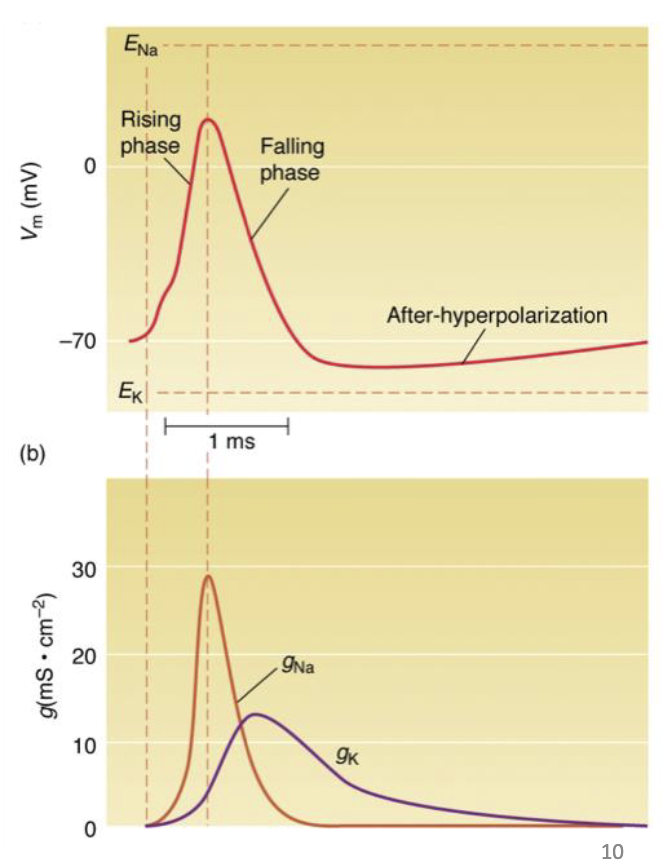
Key takeaways so far
Action potentials require threshold depolarization to open sodium channels
Sodium influx drives depolarization, but potassium efflux and sodium channel closure prevent Vm from reaching ENa
Repolarization is due to potassium leaving the cell, bringing Vm back toward resting potential
The timing of channel opening and closing is critical: sodium first, potassium later
Which factors change the magnitude of ionic current across the membrane?
Ionic current (I) depends on:
gion (conductance/permeability)
Vm - Eion (driving force)
gion changes the most during AP
Vm changes moderately
Eion changes the least
At rest:
PK = 1 (high)
PNa = 0.04 (low)
PCl = 0.45
During AP → PNa increases greatly, changing current flow
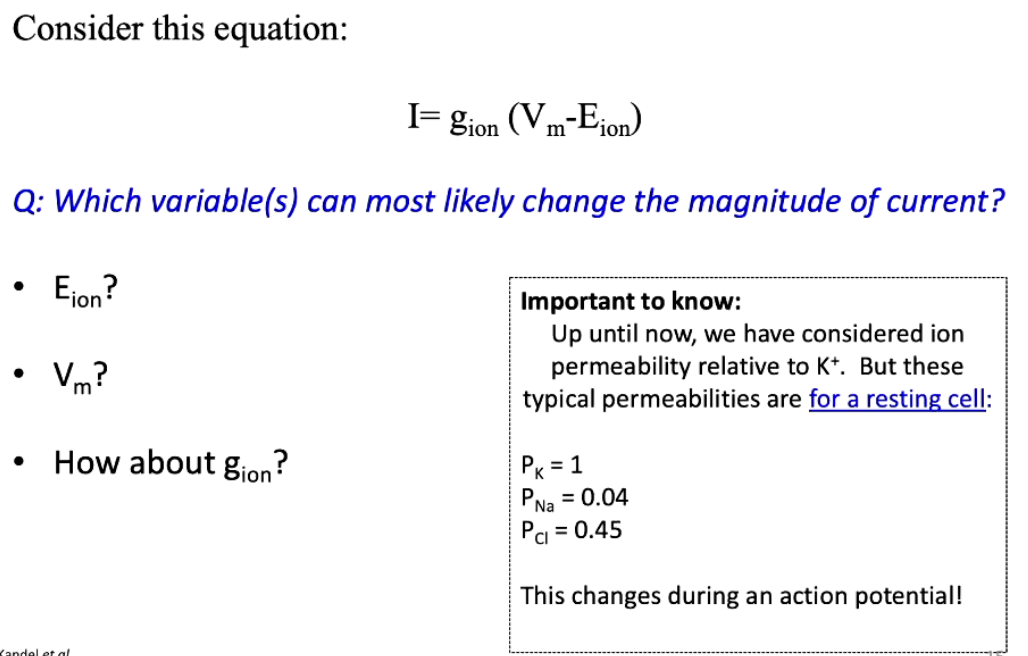
Why is Vm at rest closer to EK, and what changes during an action potential?
At rest: PNa ≪ PK → Vm close to EK
During AP: PNa sharply increases → more Na+ enters → depolarization
Ion permeability can change due to:
Voltage-gated channels opening/closing
Channel conformation changes triggered by Vm
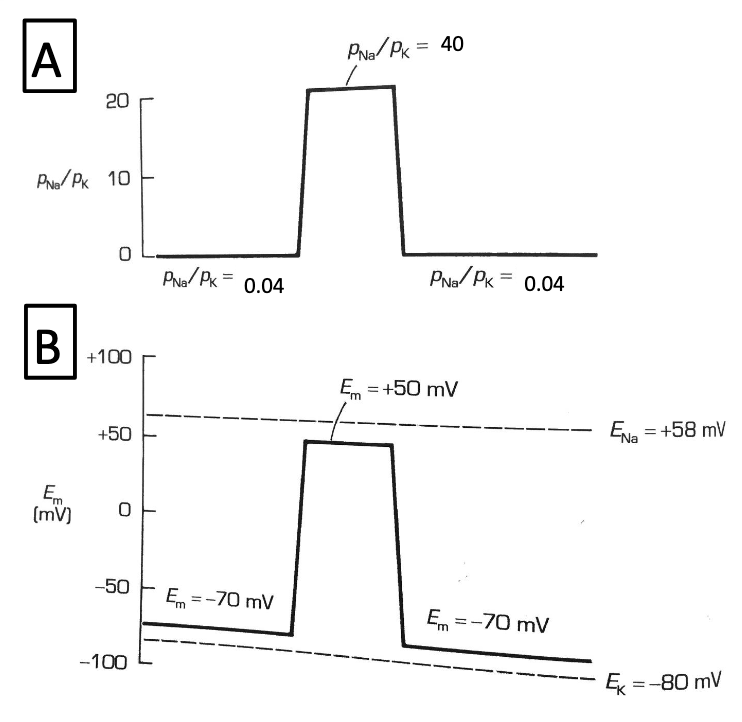
How is the voltage-gated sodium channel structured and how does it relate to permeability?
Single protein with 4 transmembrane domains
P-loops (between helices 5 & 6) form selectivity filter for Na+
S4 helix = voltage sensor → detects changes in Vm
Voltage change → conformational change → opens channel → increases permeability
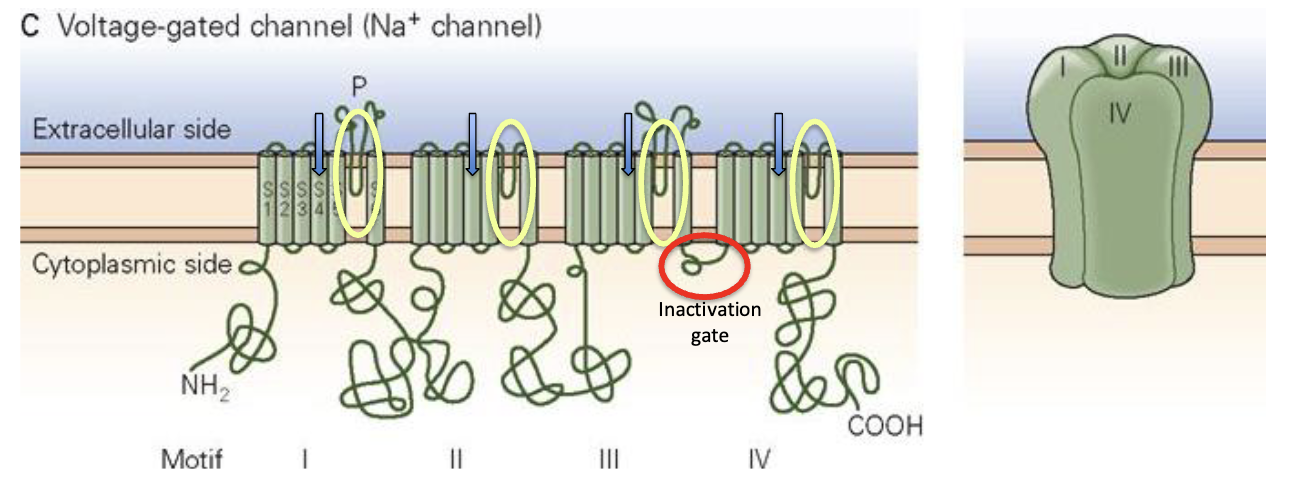
How do Na+, Ca2+, and K+ voltage-gated channels differ?
Na+ & Ca2+ channels: one large subunit with 4 domains
K+ channels: 4 separate subunits form the pore
S4 segment acts as voltage sensor in all → detects depolarization
Depolarization → conformational change → channel opens → ions flow
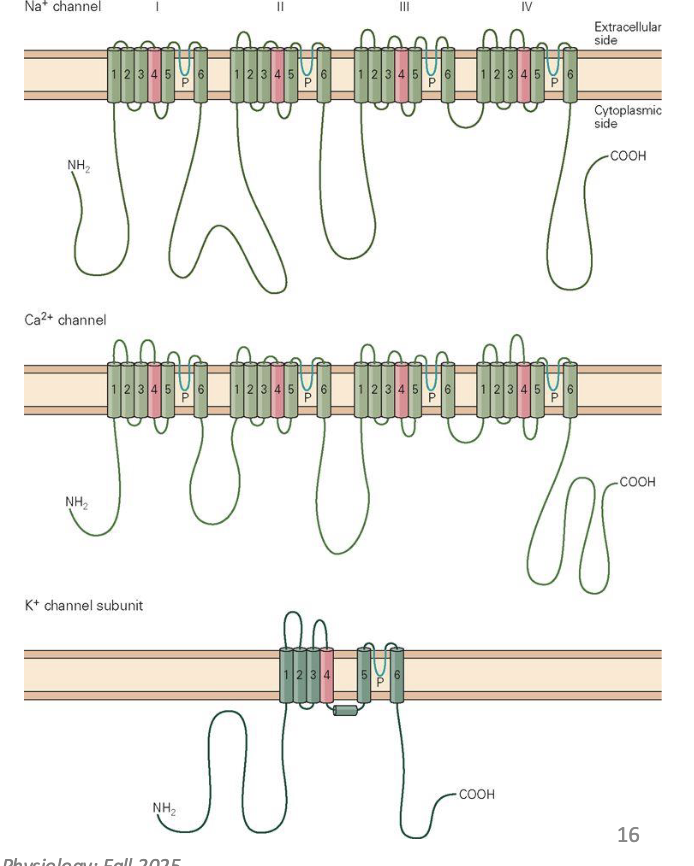
How does depolarization cause ion channels to open?
S4 region = gating charge region (positively charged)
When the cell depolarizes:
Inside becomes less negative
Positive charges in S4 move outward
Causes conformational change → channel opens
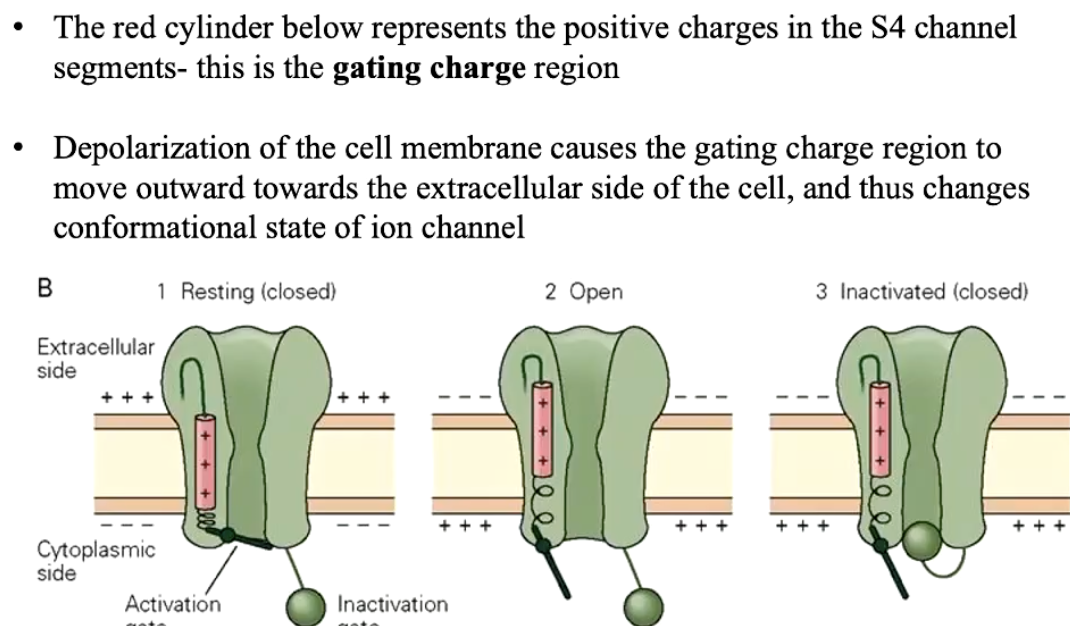
How do the two Na+ channel gates work during depolarization?
Na+ channels have:
m-gate (activation) → opens fast after depolarization
h-gate (inactivation) → closes slowly after depolarization
At rest: m closed, h open
After depolarization:
m opens immediately → Na+ enters
h closes later → Na+ stops entering (inactivation)
Conductance depends on Vm because both gates are voltage-sensitive
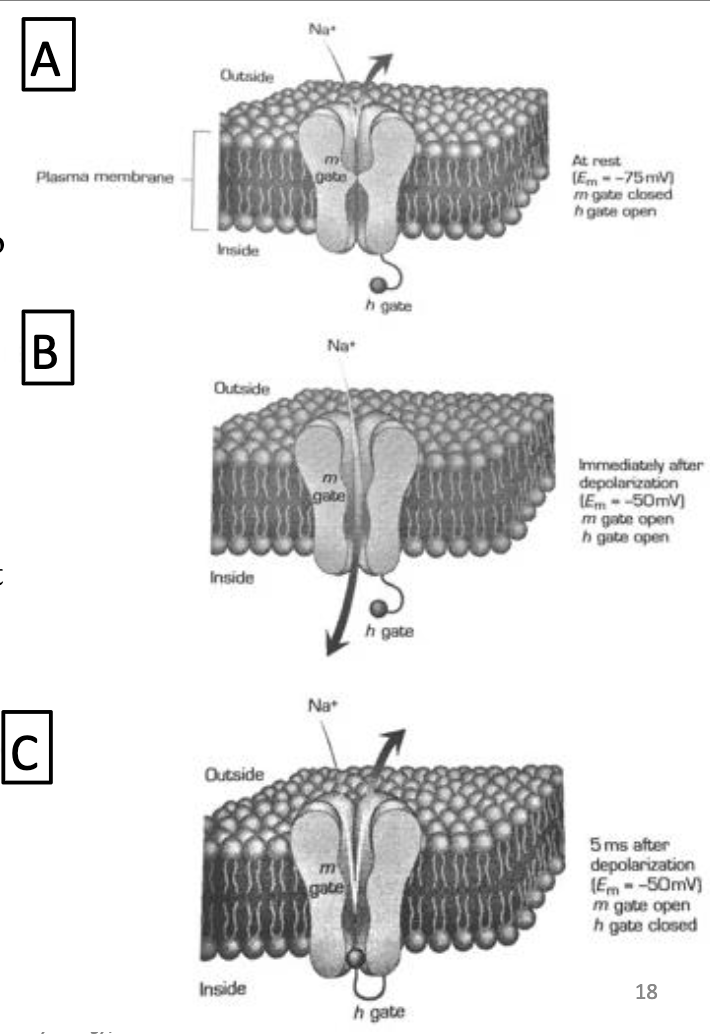
How does Na+ entry create a positive feedback loop?
Depolarization → ↑ PNa → Na+ enters → more depolarization
This opens more Na+ channels → even greater depolarization
Continues until most Na+ channels open → Vm approaches ENa
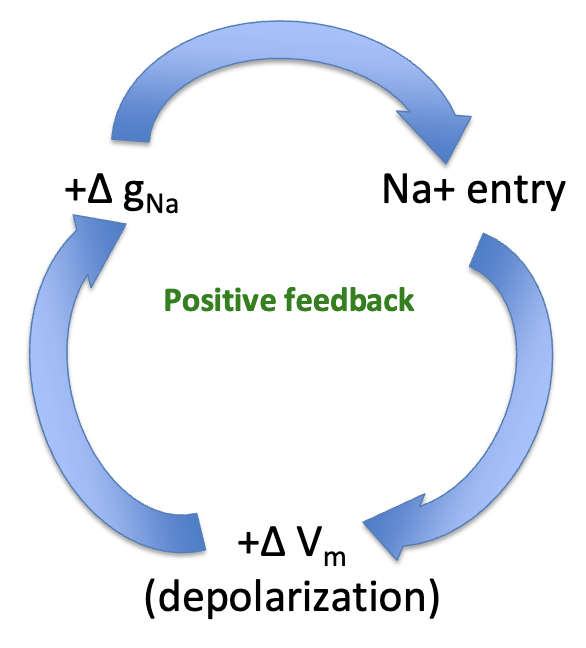
How do voltage-gated K+ channels behave during an action potential?
Closed at rest
Have n-gate, which opens slowly with depolarization
Slower than Na+ m-gate → delayed K+ outflow
n-gate opens as Na+ h-gate closes
K+ efflux → repolarizes the cell
n-gate closes again after hyperpolarization
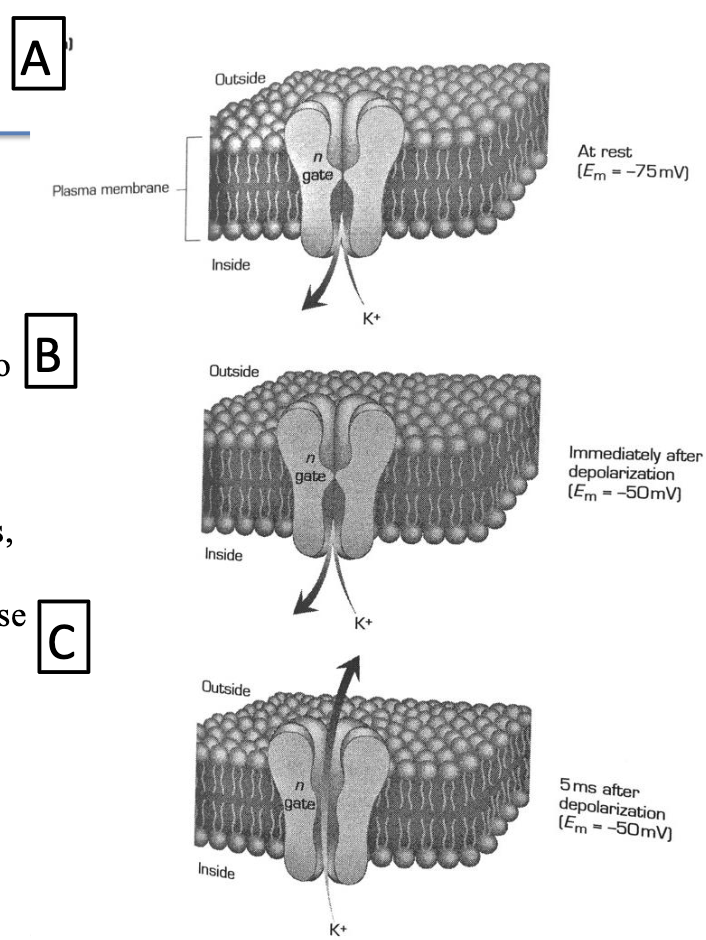
How do voltage-sensitive Na+ and K+ channel gates respond to depolarization?
Channel | Gate | Response | Speed |
|---|---|---|---|
Na+ | m gate | opens | fast |
Na+ | h gate | closes | slow |
K+ | n gate | opens | slow |
What is the sequence of ion channel changes during an action potential?
Step 1: Depolarization begins
Na+ m-gates (activation gates) open quickly
→ Na+ rushes into the cell → Vm becomes more positive
→ Triggers nearby Na+ channels to open (cascade effect)
Vm moves toward ENa (but doesn’t reach it fully)
Step 2: Peak of the action potential
Na+ h-gates (inactivation gates) start to close (slower)
K+ n-gates begin to open
→ Na+ influx stops, K+ efflux increases
Vm now moves back toward EK → repolarization
Step 3: Repolarization & return to rest
During repolarization:
h-gates reopen (ready for next AP)
n-gates close (stop K+ outflow)
Vm returns to resting potential (~ -70 mV)
